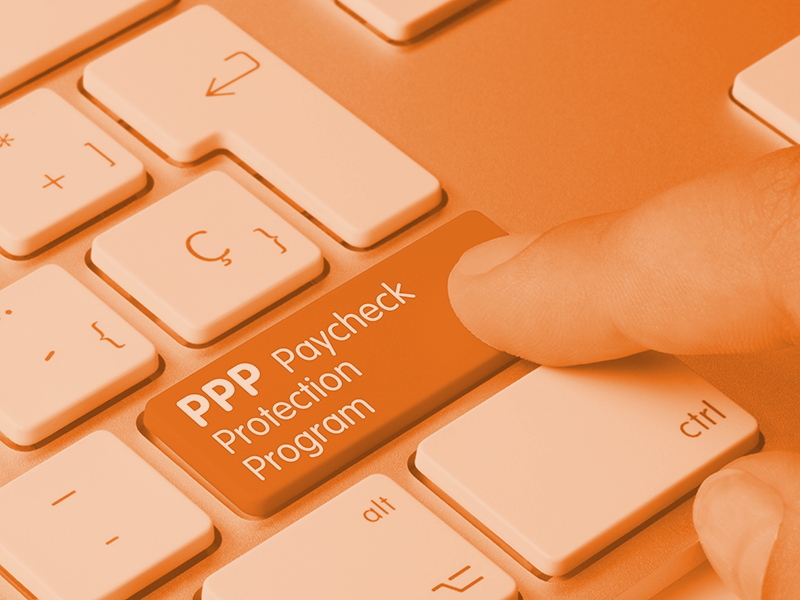Summary of Small Business & Nonprofit Provisions
Your Part-Time Controller is committed to providing the most up to date information relevant to nonprofits, and helping nonprofits stay afloat. Below is a summary of key provisions impacting nonprofits from the American Rescue Plan Act of 2021, which was signed last week by the President.
The Act provides billions in relief to individuals, state and local governments, federal agencies, small businesses, and nonprofit organizations. It expands existing pandemic relief programs and creates the Restaurant Revitalization Fund.
Skip To:
Paycheck Protection Program (PPP)
Targeted Economic Injury Disaster Loan (EIDL) Advances
Shuttered Venue Operators Grant (SVO) Program
Restaurant Revitalization Fund
Unemployment Relief for Governmental Entities and Nonprofit Organizations
Credits for Paid Sick and Family Leave
Employee Retention Credit (ERC)
The Act contains two important provisions aimed specifically at nonprofits:
- It extends Paycheck Protection Program (PPP) eligibility to more nonprofits, and
- Removes the requirement that prohibited arts organizations from receiving both a PPP loan and a Shuttered Venue Operators (SVO) grant; instead, the amount of an SVO grant will be reduced by the amount of any PPP loan received on or after 12/27/20.
In addition to expanding pandemic relief options for small businesses, the Act provides funding for state and local governments, the reopening efforts of K-12 schools, and community block grants for child care, mental health, and other social services. It also includes additional funding for the National Endowment for the Arts (NEA), National Endowment for the Humanities (NEH), the Institute of Museum and Library Services (IMLS), the National Science Foundation, and higher education.
Below are highlights from the new Act, including updates from recent Small Business Administration (SBA) guidance, and our list of recommended steps to take now.
Small Business Pandemic Relief Options – What You Need to Know
Paycheck Protection Program (PPP)
-
-
- Expanded funding – the Act provides an additional $25 billion for the program
- Program end – the deadline for applications is still March 31st but stay tuned as many groups, including the American Institute of CPAs (AICPA) are urging Congress to extend the PPP application deadline by at least 60 days
- Expanded eligibility – most nonprofits other than 501(c)(4) entities are now eligible to apply, provided they meet lobbying limitations
- Employee size limitations – For first draw loans, eligibility to charitable nonprofits is expanded to include those with 500 or fewer employees per location and to additional covered nonprofits with 300 or fewer employees per location. Second draw loans are limited to 300 or fewer employees per location for all nonprofits, including additional covered nonprofits.
-
Targeted Economic Injury Disaster Loan (EIDL) Advances
-
-
- Expanded funding – the Act provides an additional $15 billion for the program, which is directed toward businesses in low-income communities
- Priority to former applicants – $10 billion is reserved for former applicants who did not receive the full advance amounts for which they were entitled; the SBA will reach out to those who qualify
- Remaining allocation – $5 billion will be directed toward hard-hit small businesses that suffered an economic loss of more than 50% and employ 10 employees or less; each entity will receive $5 thousand
- Economic Injury Disaster Loans still available – while not advances, the SBA is still taking EIDL loan applications through 12/31/21. These loans carry a 2.75% fixed interest rate (for nonprofits) and 501 (c), (d), and (e) nonprofits with 500 or fewer employee are eligible to apply.
-
Shuttered Venue Operators Grant (SVO) Program
-
-
- Expanded funding – the Act provides an additional $25 billion for the SVO grant program
- PPP Reduction – entities who apply for SVO grants are no longer prohibited from applying for PPP loans; however, SVO grant amounts will be reduced by the amount of any PPP loans received on or after December 27, 2020 (regardless of whether the PPP loans were forgiven)
- Eligibility – the SBA released an updated FAQ document that contains information on eligibility and how to apply once the SVO grant program opens
- Performance space vs. Fixed seating – the SBA has clarified that mobile entities – such as traveling circuses and festivals – qualify for an SVO grant if (among other requirements) they have defined performance spaces. A fixed seating requirement applies only to entities that are museums or movie theaters.
- SAM registration – clients who wish to apply for an SVO grant will need to have a Dun & Bradstreet DUNS number and be registered on sam.gov (System for Award Management).
-
Restaurant Revitalization Fund
-
-
- New funding – the Act provides $28.6 billion in funding for businesses whose primary purpose is to serve food or drink, with a $5 billion carveout for small restaurants with gross receipts less than $500,000 in 2019. There will also be a 21-day priority window for businesses owned by women, veterans, and economically or socially disadvantaged individuals.
- PPP Reduction – because grant amounts are based on revenue loss, pandemic-related revenue losses will be reduced by the amount of any PPP loans received in 2020 or 2021
- Eligibility – an entity cannot own or operate more than 20 establishments and entities that apply or receive an SVO grant are ineligible
- Maximum grant amount – up to $10 million, limited to $5 million per physical location
- Qualifying expenses – payroll, mortgage/rent payments, utilities, supplies, food and beverage expenses, supplier costs, operational expenses, paid sick leave, and maintenance costs (including construction of outdoor seating) incurred from 2/15/20 through 12/31/21; any unused grant funds must be returned
- More information – while the SBA has yet to issue guidance on this program, the National Restaurant Association has issued a helpful policy brief
-
Unemployment Relief for Governmental Entities and Nonprofit Organizations
-
-
- Program extension – extends through 9/6/21 the federal subsidy initiated under the CARES Act, which assists governmental entities, Indian tribes, and nonprofit organizations who elect to self-insure unemployment instead of paying into a state unemployment program
- Increase in reimbursement rate – for weeks beginning after 3/31/21, the subsidy increases from 50% to 75% of amounts paid for unemployment benefits by an employer. Employers apply for the subsidy through their state.
-
Credits for Paid Sick and Family Leave
-
-
- Extends tax credits for voluntary programs – extends the Families First Coronavirus Response Act (FFCRA) payroll tax credit through 9/30/21. This credit is available to employers who continue to voluntarily choose to provide FFCRA paid sick and family leave to employees.
- FFCRA modifications – the Act expands the reasons for covered leave to include obtaining a COVID-19 immunization or recovering from an illness or injury related to immunization. It also increases the wage limit for which employers can claim a credit for paid family leave from $10,000 to $12,000 per employee. If employers choose, they may provide employees (who previously took emergency paid sick leave) with an additional ten days of leave.
- Limitations – wages for which FFCRA credits apply cannot also be reported as eligible payroll costs for PPP loan forgiveness, SVO grants, or a Restaurant Revitalization Grant
-
Employee Retention Credit (ERC)
-
-
- Extension – the ERC is extended through December 31, 2021 and expands coverage to businesses started after February 15, 2020. This means that eligible employers may be able to claim an additional $14,000 of credits per employee for the last two quarters of 2021.
- Modifications – the Act made three important changes to the ERC, which apply only to the third and fourth quarters of 2021:
- A new category was added for “severely financially distressed employers” who suffer a revenue decline of 90% or more; for these employers, all wages qualify for the credit
- A new category was added for “recovery startup businesses” who were established after 2/15/20, had gross receipts less than $1 million, and who otherwise would not meet ERC eligibility; the ERC for these employers is limited to $50,000 for all employees per quarter
- The Q3 and Q4 credit amounts are applied against Medicare taxes instead of Social Security
- PPP overlap – an employer cannot claim PPP loan forgiveness and an ERC for the same payroll expenses. However, in recent ERC guidance, the IRS has clarified that employers who report more wages than required for PPP loan forgiveness may treat the excess – payroll amounts over the amount of loan that is forgiven – as qualified wages for ERC purposes.
-
Small Business Pandemic Relief Options: What You Need to Do
Steps to Take Now
-
-
- Evaluate your options – many organizations may be eligible for multiple pandemic relief options. Below is a summary of the major eligibility thresholds under programs applicable to nonprofits:
- Paycheck Protection Program First Draw – in operation as of 2/15/20 and not permanently closed
- Paycheck Protection Program Second Draw – 25% reduction in gross receipts
- Economic Injury Disaster Loan – nonprofit organizations currently experiencing a temporary loss of revenue
- Employee Retention Credit – employers who experience a full or partial shutdown due to a governmental order as a result of COVID-19 or experience a decline in year-over-year gross receipts during a calendar quarter. In 2020 the revenue decline must be greater than 50%, and in 2021 the revenue decline must be greater than 20%.
- Shuttered Venue Operators Grant – 25% reduction in gross earned revenue during any quarter in 2020 compared to 2019
- Strategize – maximize the amount of qualified non-payroll costs (up to the 40% limit) in your PPP loan forgiveness applications and know the amount of any excess wages available to provide the greatest amount for other options, like the Employee Retention Credit
- Check in regularly with the SBA website – while relief options are available, the SBA will continue to update PPP FAQ, SVO FAQ, and information on finding PPP lenders. Expect to see new PPP loan applications released soon that reflect the expanded eligibility that arose from the American Rescue Plan. Remember, we’re also hoping to see an extension of the PPP application deadline.
- Pre-register for grant opportunities – check in with federal agencies – such as the NEH or NEA – that received allocations under the ARP Act to see if they have released guidelines or application materials. Note that many agencies require registration with sam.gov (System for Award Management) as well as Dun & Bradstreet for a DUNS number.
- Don’t overlook local funding opportunities – many states and local municipalities have implemented Coronavirus relief options, including Emergency Rental Assistance. But to find them, you may have to do some digging. For example, the Treasury website provides an overview of the Emergency Rental Assistance Program and list of eligible government units but grantees will have to search their own local government website to find out how to apply. This also applies to nonprofits who self-insure unemployment and need to request the subsidy reimbursement from their state government(s).
- Evaluate your options – many organizations may be eligible for multiple pandemic relief options. Below is a summary of the major eligibility thresholds under programs applicable to nonprofits:
-
YPTC is here to help – reach out to your YPTC staff member, and access our Staying Afloat Resources web page for helpful links and resources, including our recent Q&A Blog Posts







